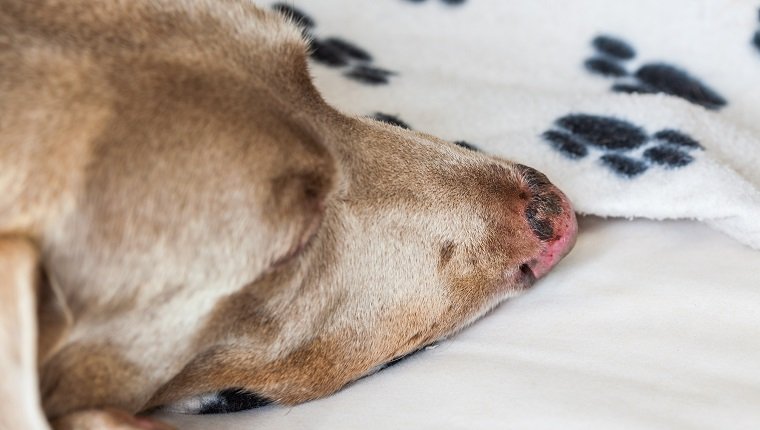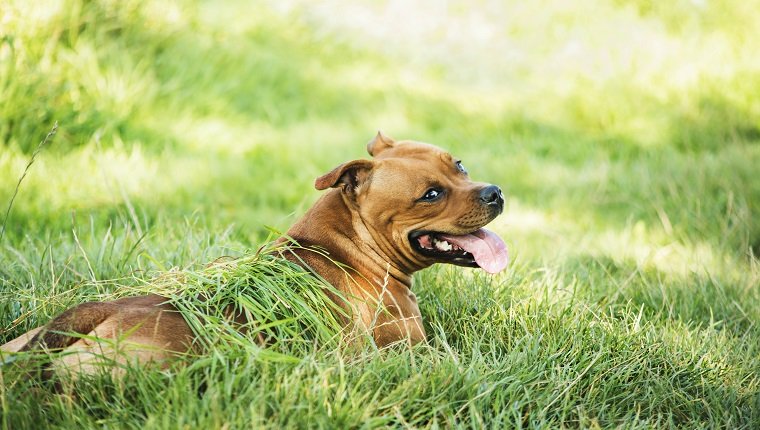
(Picture Credit: anamejia18/Getty Images)
Sunburns develop when dogs suffer from overexposure to UV rays from the sun, making their skin tight, red, and tender, just like when we humans get sunburns.
Dogs tend to get sunburns in areas where they have little to no fur, like around the nose or ears, and dogs with lighter-colored fur are also more susceptible. Hairless dogs are the most prone to getting burns from sun exposure.
If you see the signs of a sunburn in your dog, be sure to contact your veterinarian for a proper course of treatment. Some burns may just require a little extra TLC, while more severe burns can require immediate attention. Here’s what you should know about the symptoms, causes, and treatments for sunburn in dogs.
Symptoms Of Sunburn In Dogs
Like in humans, the signs of sunburn in dogs usually start to show within a couple hours after overexposure to UV rays, like after a long day at the beach or a sunny hike.
Here are some of the symptoms that might appear in dogs who suffer from sunburns:
- Pink to red skin in the affected area
- Skin dryness and tenderness
- Skin peeling
- Blisters
- Fever
More severe sunburn will be a deeper shade of red, veering into a deep purple, and these require immediate veterinary attention.
Causes Of Sunburn In Dogs

(Picture Credit: VikaValter/Getty Images)
The cause of sunburn in dogs is overexposure to ultraviolet rays from the sun.
Overexposure can happen when dogs spend too much time in direct sunlight. This can occur during long hours spent outdoors or even in a particularly sunny spot near a window indoors. Although sunburns are more common in summer, they can also develop in winter or even on cloudy days.
Dogs who experience a lot of UV damage are also susceptible to skin cancer.
Some breeds can be more prone to sunburn than others, especially breeds with white or light fur, or hairless breeds. Dogs who suffer from conditions such as alopecia may also have less fur coverage and therefore be more likely to get sunburned.
Treatment For Sunburn In Dogs
The best way to treat sunburn in dogs is to prevent it. Apply a dog-friendly sunscreen to your pup any time you plan on spending more than 30 minutes outdoors with them. Be sure to cover delicate areas, like the tips of the ears, around the paws, and any spots that may have finer or less fur.
Avoiding prolonged sun exposure can help, as well. You may want to keep your walks with your dog to shadier areas and avoid peak hours when the sun is at its brightest, usually between 10am and 4pm.
In the event that your dog gets a sunburn, there are some ways to make them more comfortable. A cold compress can help soothe hot spots, and aloe vera gel can also cool sunburn and help your dog’s skin heal quicker.
Your veterinarian may prescribe antibiotics if your dog’s sunburn is severe enough or starting to look infected. Again, this is why it’s so important to contact your vet, even if it just seems like a mild sunburn.
Also, if your dog is picking or chewing at their sunburn, your vet may recommend a cone or other blocking device to keep the sunburned area from becoming infected.
Has your dog ever had a sunburn? How did you treat it and make sure your dog stayed comfortable as they healed? Let us know in the comments below!